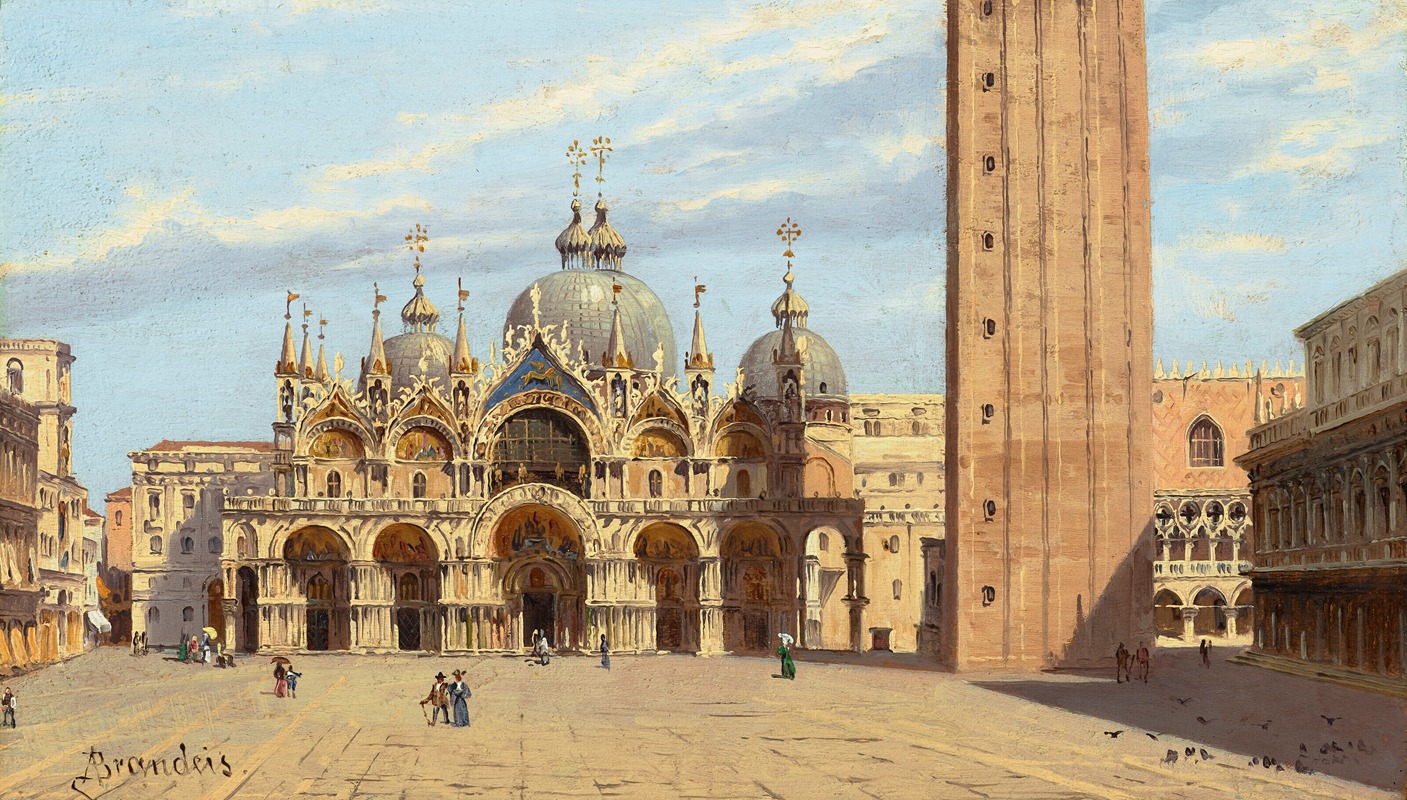
Piazza San Marco, Venice
A hand-painted replica of Antonietta Brandeis’s masterpiece Piazza San Marco, Venice, meticulously crafted by professional artists to capture the true essence of the original. Each piece is created with museum-quality canvas and rare mineral pigments, carefully painted by experienced artists with delicate brushstrokes and rich, layered colors to perfectly recreate the texture of the original artwork. Unlike machine-printed reproductions, this hand-painted version brings the painting to life, infused with the artist’s emotions and skill in every stroke. Whether for personal collection or home decoration, it instantly elevates the artistic atmosphere of any space.
Antonietta Brandeis was a Czech-Italian painter known for her detailed and vibrant depictions of Venetian scenes, among other subjects. One of her notable works is "Piazza San Marco, Venice," which captures the iconic public square in Venice, Italy. Brandeis was born in 1849 in Miskovice, Bohemia, and later moved to Venice, where she became one of the few female artists of her time to gain recognition for her work. She studied at the Academy of Fine Arts in Venice, which was a significant achievement given the limited opportunities available to women in the arts during the 19th century.
"Piazza San Marco, Venice" is a testament to Brandeis's skill in capturing the essence of Venetian architecture and the lively atmosphere of the city. Piazza San Marco, often referred to as St. Mark's Square, is one of the most famous squares in the world and serves as a social, religious, and political center in Venice. The square is renowned for its stunning architecture, including St. Mark's Basilica, the Campanile (bell tower), and the Doge's Palace. These landmarks are often subjects of artistic representation due to their historical significance and architectural beauty.
Brandeis's painting of Piazza San Marco is characterized by its meticulous attention to detail and vibrant use of color, which bring the scene to life. Her work often features a high level of precision, capturing the intricate details of the buildings and the dynamic interplay of light and shadow. This attention to detail is a hallmark of Brandeis's style, which combines elements of realism with a keen sense of atmosphere.
The painting likely depicts the square bustling with activity, as was typical of Brandeis's work, which often included figures going about their daily lives. This approach not only highlights the architectural grandeur of the setting but also provides a glimpse into the social life of Venice during the period. Brandeis's ability to convey both the physical and social aspects of her subjects is one of the reasons her work remains appreciated today.
Brandeis's paintings, including "Piazza San Marco, Venice," are part of a broader tradition of vedute, or detailed cityscapes, which were popular among artists and collectors in the 18th and 19th centuries. These works were often sought after by tourists and art patrons who wished to capture the beauty and uniqueness of cities like Venice. Brandeis's contribution to this genre is significant, as she brought a unique perspective and sensitivity to her depictions of urban landscapes.
Throughout her career, Antonietta Brandeis produced numerous paintings of Venice and other Italian cities, earning her a place among the notable artists of her time. Her work continues to be celebrated for its technical skill and ability to evoke the charm and character of the places she depicted. Brandeis's legacy is preserved in various collections, and her paintings remain a testament to her talent and dedication to capturing the beauty of the world around her.








![Designs for the Puck Theater , New York, NY.] [Exterior perspective study.](/imgs/249326/s/winold-reiss-designs-for-the-puck-theater-new-york-ny-exterior-perspective-study-8f47d02.jpg)









